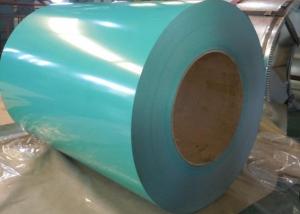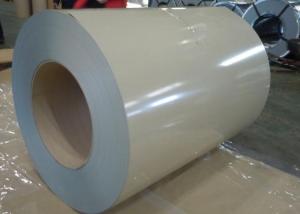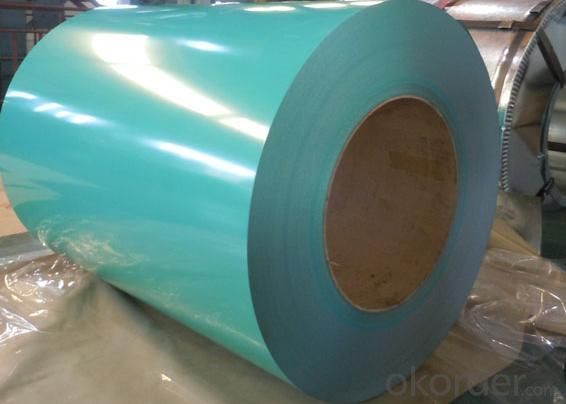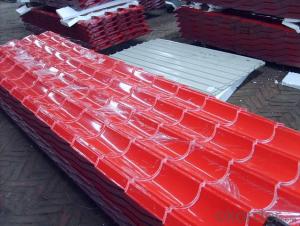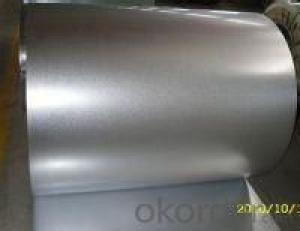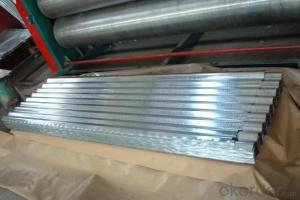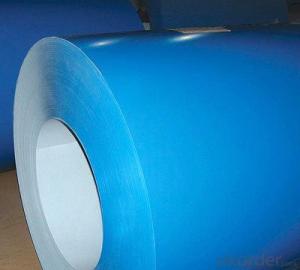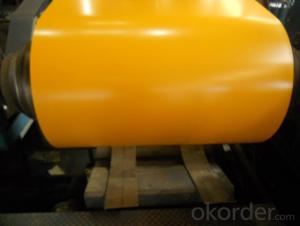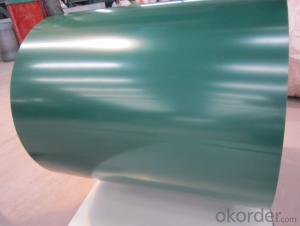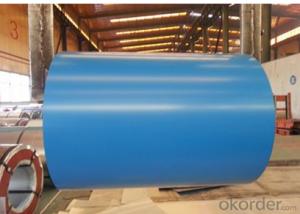Prepainted Aluzinc Steel Coil-EN 10169
- Loading Port:
- China Main Port
- Payment Terms:
- T/T or L/C
- Min Order Qty:
- 50mt m.t.
- Supply Capability:
- 100,000 mt/year m.t./month
OKorder Service Pledge
OKorder Financial Service
You Might Also Like
General Information Of Prepainted Aluzinc Steel- EN 10169
With Aluzinc steel as base metal, after pretreatment (degrease and chemical treatment) and liquid dope with several layers of color, then after firing and cooling, finally the plate steel is called pre-painted aluzinc steel. Pre-painted aluzinc steel is good capable of decoration, molding, corrosion resistance. It generally displays superior workability, durability and weather resistance.
|
Thickness 0.23-1.2mm (BMT) |
|
Zinc Coating 50-150g/m2 |
|
Color According to RAL color fan |
|
Internal Diameter 508mm or 610mm |
|
Coil Weight 4-8MT |
|
Quality Commercial and structural quality |
|
Paint Polyester paint for topside, epoxy for reverse |
|
Standard JIS G 3322, ASTM A755M, EN 10169 |
|
Base Steel Grade SGCC,SGCD,DX51D+Z,DX52D+Z;S200GD,S220GD, S280GD,S350GD,CS,FS,SS |
Chemical Composition Of Prepainted Aluzinc Steel - EN 10169
|
C |
Si |
Mn |
P |
S |
|
0.04-0.06% |
0.01-0.03% |
0.18-0.22% |
0.014-0.016% |
0.006%-0.009% |
Technical Data Of Prepainted Aluzinc Steel - EN 10169
|
Yield Strength |
(Mpa) 280-320 |
|
Tensile Strength |
(Mpa) 340-390 |
|
Elongation |
20%-30% |
|
Reverse Impact |
9J |
|
T-bending |
≥2T |
|
Pencil Hardness |
≥2H |
|
Duration Of Salt Spray Test |
500 H |
|
Bending At 180 Degree |
No crack, purling and fraction |
Application Of Prepainted Aluzinc Steel - EN 10169
It can be widely used in transportation, light industry, civil usage and farming. It is also the perfect building material in construction for making steel roofing, corrugate sheet, sandwich panel for wall or roofing, facade wall, shutters and home appliance.
Packaging & Delivery Of Prepainted Aluzinc Steel - EN 10169
Anti-damp paper inside full wrapped with plastic film, iron sheet outside on wooden pallet in 20 feet container with 25mt.
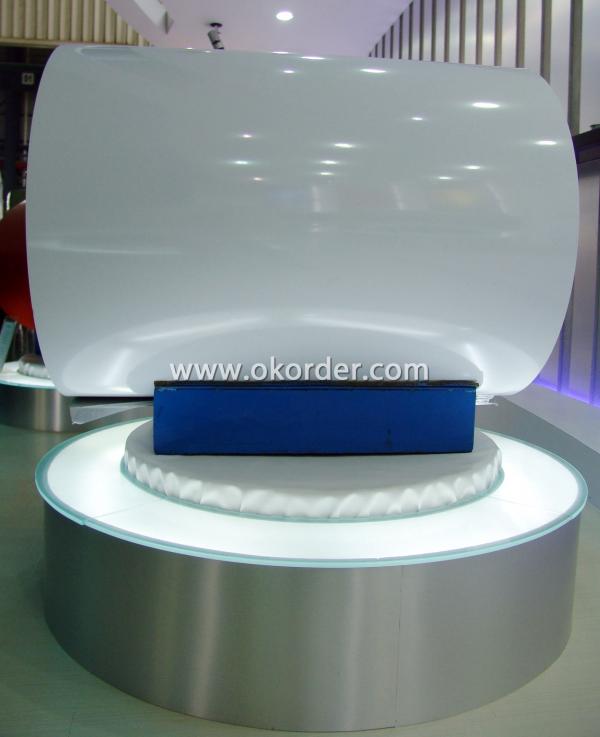
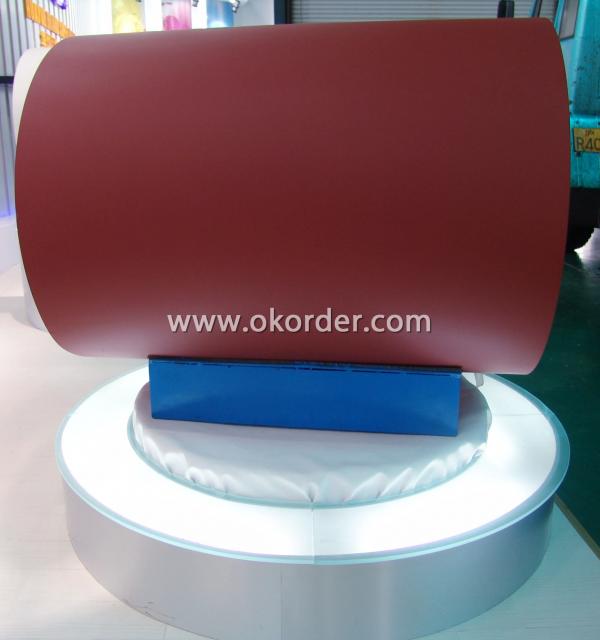
- Q: I want a good quality, big, strong, steel knife but I want it to be a good price, say around $30 or less, $60 at the most. please add links.
- Sorry, probably aint gonna happen in that $ range. How big of a blade will effect the steel selection. For instance I have one I forged from 52100, a most excellent steel better suited for 5-6 blades. For larger blades either 5160 or L-6 can make an indestructable blade. For 5 and under D-2 is about as fine a steel as you can get. No blade made from these will come cheap, L-6 is only available from custom makers. Save up your money, expect to pay 100 - 200 for a well made blade. You pay cheap prices you get cheap workmanship.
- Q: What are the common size limitations for steel coil production?
- The size limitations for steel coil production can vary based on various factors, including the type of steel used, the manufacturing process, and the available equipment. However, there are generally accepted size limitations in the industry. One primary constraint is the width of the steel coil, which is typically determined by the size of the rolling mill or slitting equipment used in production. Standard widths for steel coil production range from approximately 600 millimeters (23.6 inches) to 2,000 millimeters (78.7 inches). Nonetheless, specialized equipment and processes can achieve widths outside of this range. Another limitation is the thickness of the steel coil, which can be influenced by the type of steel, intended application, and manufacturing capabilities. Common thicknesses for steel coils range from 0.15 millimeters (0.006 inches) to 6 millimeters (0.236 inches). However, specialized equipment and processes may be required to produce thicker or thinner coils. The weight of the steel coil is also an important consideration, typically determined by the capacity of production and handling equipment, as well as transportation limitations. Standard coil weights range from a few hundred kilograms to several tons. However, larger equipment or dividing the coil into smaller coils can enable the production of coils that exceed these limits. In addition to width, thickness, and weight, there may also be limitations on the length of the steel coil. This can be influenced by factors such as the size of the production line, handling and transportation capabilities, and customer requirements. Standard coil lengths typically range from a few meters to several tens of meters. However, specialized equipment and processes can produce longer coils. It is important to note that these size limitations are not fixed and can vary depending on project or customer requirements. Manufacturers often collaborate closely with customers to determine the optimal size limitations for their steel coil production, ensuring the final product meets desired specifications.
- Q: What is the accuracy of steel tape inspection?
- The project is through the detection of steel tape, steel tape each batch have the error him different, so do projects each into a batch of steel tape has to go through the inspection department, let this batch of steel tape has reached the same error range. All the measuring tools in this project are unified into these steel tape measures, so that the measurement error is guaranteed.
- Q: How are steel coils used in the production of steel drums?
- Steel coils are used in the production of steel drums by being cut into sheets and then rolled into cylindrical shapes, which form the body of the drum. The coils provide the necessary strength and durability required for the drums to hold and transport various materials safely.
- Q: What are the different types of steel alloys used in coil production?
- There are several types of steel alloys used in coil production, including carbon steel, stainless steel, and high-strength low-alloy (HSLA) steel. These alloys offer varying levels of strength, corrosion resistance, and formability, making them suitable for different applications in industries such as automotive, construction, and manufacturing.
- Q: How do steel coils contribute to the energy sector?
- Steel coils contribute to the energy sector by being a crucial component in the construction and maintenance of power plants, transmission towers, and renewable energy infrastructure. These coils are used to manufacture equipment like turbines, generators, transformers, and pipelines, which are vital for the efficient generation, transmission, and distribution of electricity. Additionally, steel coils are also used in the manufacturing of energy-efficient appliances and vehicles, further promoting sustainability in the energy sector.
- Q: Are steel coils affected by temperature changes?
- Yes, steel coils can be affected by temperature changes. Steel is a metal that expands when heated and contracts when cooled. This expansion and contraction can lead to changes in the dimensions and shape of steel coils. Additionally, extreme temperature variations can cause thermal stress, which may result in warping, cracking, or weakening of the steel coils. Therefore, temperature changes can have an impact on the performance and integrity of steel coils.
- Q: How are steel coils used in the manufacturing of marine equipment?
- Steel coils are used in the manufacturing of marine equipment as they serve as a primary material for constructing various components such as hulls, decks, and superstructures. The coils are shaped, cut, and formed into the desired shapes and sizes to create strong and durable structures that can withstand the harsh conditions of the marine environment. Additionally, steel coils are also used in the fabrication of marine machinery and equipment, including engines, propellers, and winches, due to their high strength and corrosion resistance properties.
- Q: Explain why a steel nail sinks but a steel ship floats.
- Its all about dispersing.weigh and mass. Over a larger area .And the surface tention of the water.A piece of glass will float as long as the water is calm. and doesn't break over the edge of the glass. I don't remember the formula. been away from school to long.
- Q: Just two sentences on a detailed description on what the steel industry is
- The steel industry is an industry that produces steel. It is one of the largest industries in the world, with China as the leading steel producer
1. Manufacturer Overview
| Location | Jiangsu, China |
| Year Established | 2003 |
| Annual Output Value | US$1 Million - US$2.5 Million |
| Main Markets | Mid East;Western Africa;Sourth America;southeastern Asia |
| Company Certifications | ISO9001:2000 |
2. Manufacturer Certificates
| a) Certification Name | |
| Range | |
| Reference | |
| Validity Period |
3. Manufacturer Capability
| a) Trade Capacity | |
| Nearest Port | Shanghai Port, China |
| Export Percentage | 41% - 50% |
| No.of Employees in Trade Department | 21-50 People |
| Language Spoken: | Chinese, English |
| b) Factory Information | |
| Factory Size: | 10,000-30,000 square meters |
| No. of Production Lines | Above 10 |
| Contract Manufacturing | OEM Service Offered |
| Product Price Range | Average |
Send your message to us
Prepainted Aluzinc Steel Coil-EN 10169
- Loading Port:
- China Main Port
- Payment Terms:
- T/T or L/C
- Min Order Qty:
- 50mt m.t.
- Supply Capability:
- 100,000 mt/year m.t./month
OKorder Service Pledge
OKorder Financial Service
Similar products
Hot products
Hot Searches
Related keywords
